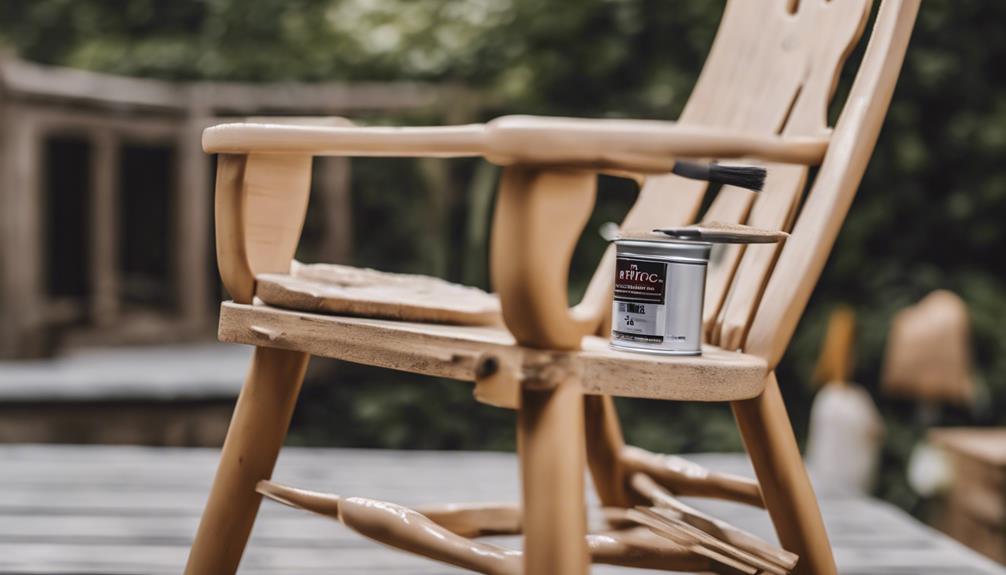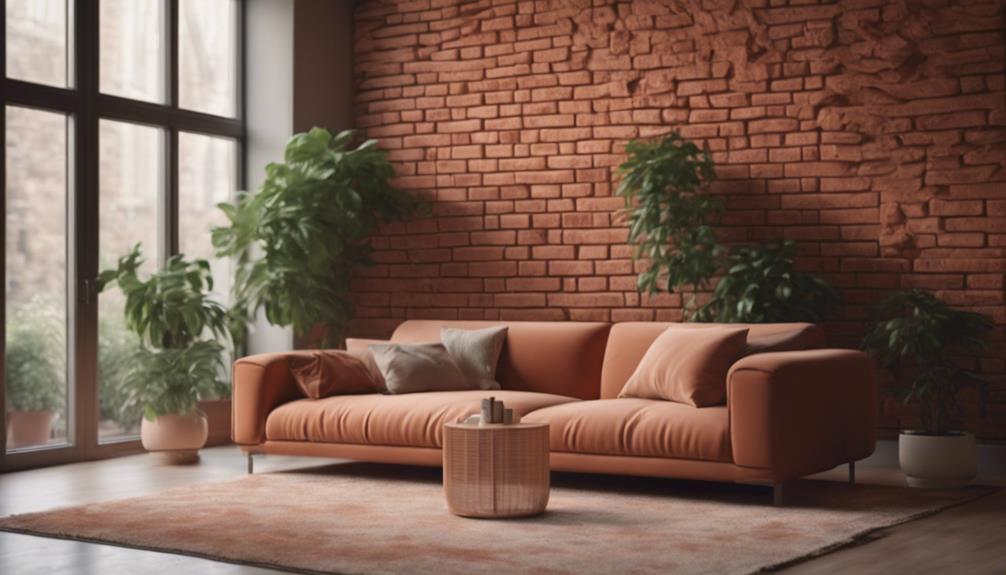For the best outcome using Frenchic Alfresco paint, it is recommended to apply two coats. This method enhances color depth, provides superior coverage, and delivers a professional appearance. The first coat penetrates the wood grain, while the second coat intensifies richness and depth. Thicker coats may be necessary for darker hues. Following proper application techniques, such as using thin, even layers with a high-quality brush, and allowing ample drying time, guarantees a flawless finish. Peak results are achieved by applying at least two coats, maintaining consistency, and adhering to recommended drying intervals. This approach ensures longevity, durability, and vibrant color preservation.
Key Takeaways
- Apply two coats for top coverage and durability.
- Allow proper drying time between coats.
- Enhance color and durability with the second coat.
- Maintain consistent painting techniques for a uniform finish.
- Follow recommended drying times for optimal results.
Benefits of Using Two Coats
For best results, consider applying two coats of Frenchic Alfresco paint to take advantage of its enhanced color depth and improved coverage.
Applying a second coat not only enhances the color but also guarantees a more even and professional-looking finish on your furniture. The second coat plays an important role in increasing the durability and longevity of the painted surface, providing a more robust protective layer, which is especially important for outdoor furniture exposed to the elements.
By opting for two coats of Frenchic Alfresco paint, you can achieve a more vibrant and rich color payoff, elevating the overall aesthetic of your furniture pieces. The benefits of using a second coat extend beyond just appearance, offering a practical advantage in terms of protection and longevity.
It's highly recommended to apply a second coat of Frenchic Alfresco paint to maximize the color depth, coverage, and longevity of your painted furniture.
Proper Application Techniques
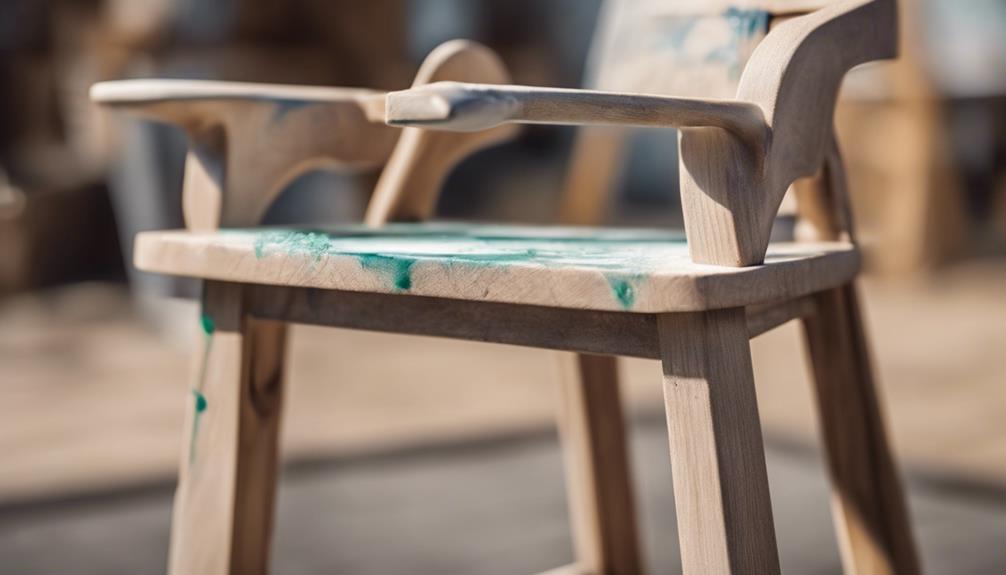
To guarantee a professional finish, it's essential to choose the right brush for applying Frenchic Al Fresco paint. Opt for a high-quality brush that will help you achieve thin, even layers on your furniture.
This technique is vital to enhancing the durability and color depth of the paint for a flawless result.
Brush Selection
Select a high-quality synthetic bristle brush for applying Frenchic Alfresco paint evenly and precisely. Using a brush with synthetic bristles guarantees smooth and uniform coverage, ideal for chalk paints like Frenchic Alfresco. When choosing a brush size, opt for one that allows for precise application, giving you control over the paint and ensuring even distribution. Proper brush selection is critical to achieve professional-looking results with Frenchic Alfresco paint. Below is a table summarizing key points to keep in mind when selecting a brush for painting with Frenchic Alfresco:
| Factor | Recommendation |
|---|---|
| Bristle Type | Synthetic bristles for smooth application |
| Brush Size | Choose a size that offers precision |
| Handle Material | Comfortable grip for extended painting |
| Shape of Brush Head | Angled or flat for different painting needs |
Thin Even Layers
To guarantee a professional finish when applying Frenchic Alfresco paint, follow these essential steps:
- Apply Thin Even Layers:
Make sure you apply the paint in thin, even layers on the furniture surface. This technique helps in achieving a smooth finish and prevents drips or uneven coverage.
- Use Proper Application Tools:
Utilize a high-quality paintbrush or roller to apply the Frenchic Alfresco paint. This ensures that the paint is distributed evenly for a flawless look.
- Avoid Thick Coats:
Steer clear of applying thick coats of paint, as they can lead to extended drying times and an uneven finish. Building up the color gradually with thin layers is key to a professional outcome.
- Allow for Adequate Drying Time:
Take your time between coats and allow each layer to dry thoroughly. This step is important in ensuring a flawless finish that will last.
Ensuring Color Depth

For enhanced color depth and a vibrant finish, applying two coats of Frenchic Alfresco paint is crucial. The first coat penetrates the grain of the wood, providing a base for the color to adhere to and guaranteeing a more even application.
Once the initial coat is completely dry, the second coat can be applied to enhance the richness and depth of the color. This second layer helps to achieve a more consistent finish, covering any imperfections or uneven areas left by the first coat.
In some cases, especially with darker colors or when aiming to cover imperfections, thicker coats may be necessary to achieve the desired result. The number of coats needed can vary depending on the color of the paint used and the level of coverage desired.
Achieving a Professional Finish
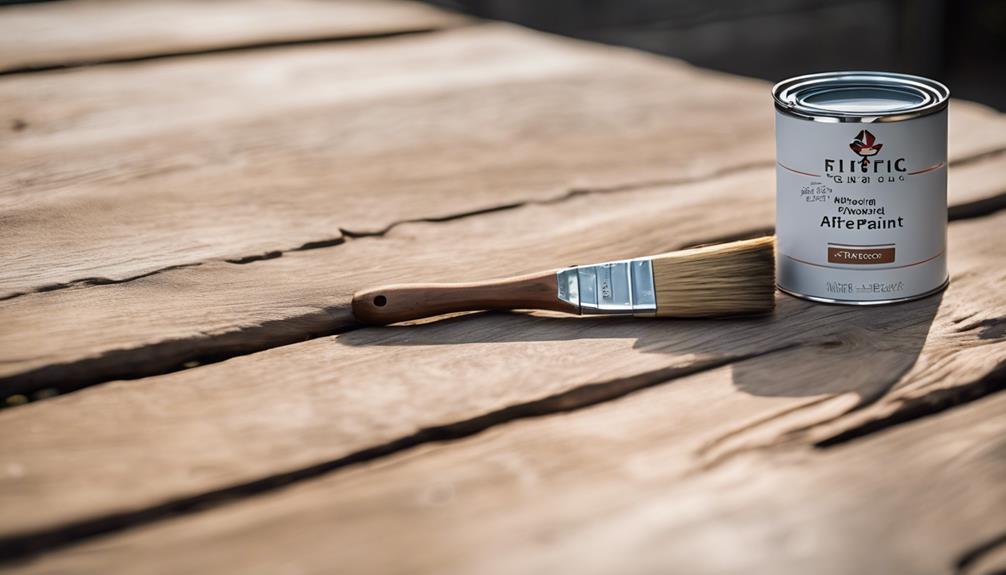
To achieve a professional finish with Frenchic Alfresco paint, it's essential to focus on two key points: smooth surface application and drying time considerations.
Applying each coat evenly with a paintbrush or roller will help guarantee a seamless finish. Additionally, allowing adequate drying time between coats is vital for enhancing color depth and durability, ultimately resulting in a flawless and long-lasting appearance for your furniture.
Smooth Surface Application
Achieving a professional finish with Frenchic Al Fresco paint on smooth surfaces involves applying at least two coats for best results. To guarantee a flawless outcome, follow these steps:
- First Coat:
Start by applying a thin and even first coat on the smooth surface. This initial coat acts as a base for the subsequent layers.
- Second Coat:
Once the first coat is completely dry, apply a second coat to enhance the color depth and provide a professional finish. Avoid rushing this step to prevent any lifting or uneven coverage.
- Thin Coats:
Applying multiple thin coats is preferable over one thick coat. This technique promotes better adhesion and durability, resulting in a long-lasting finish on your furniture.
- Drying Times:
Follow the recommended drying times between coats to allow for proper curing and to achieve a flawless and durable finish. Patience during the drying process will pay off in the end with a beautifully painted surface.
Drying Time Considerations
To guarantee a flawless and professional finish when using Frenchic Alfresco paint on smooth surfaces, proper consideration of drying times is essential. The drying times for Frenchic Alfresco typically range from 2 to 4 hours between coats, depending on the temperature and humidity levels in the environment.
It's vital to make sure that each coat is fully dry before applying the next one to achieve the best results. Remember, applying multiple thin coats is preferable to one thick coat as it leads to a smoother and more durable finish. Rushing the process should be avoided at all costs.
Adequate drying time between coats is necessary to prevent smudging or uneven results. By following the recommended drying times diligently, you can significantly enhance the outcome of your project with Frenchic Alfresco paint. Remember, patience is key when aiming for a professional finish that will stand the test of time.
Durability and Longevity
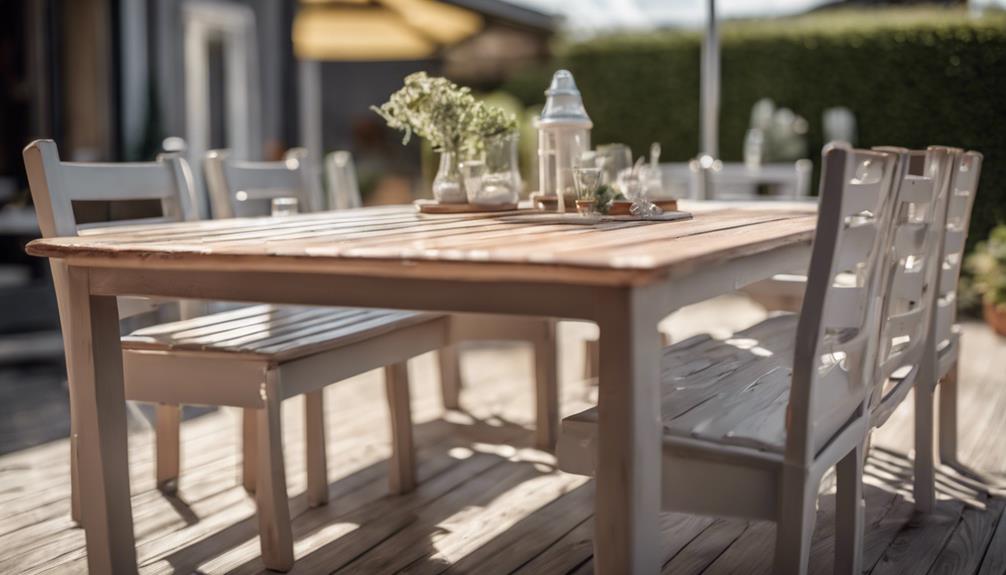
For the best durability and longevity of your outdoor furniture, consider applying two coats of Frenchic Alfresco paint. This will guarantee that your outdoor pieces are well-protected against the elements and maintain their vibrant appearance for an extended period.
- Designed for Outdoor Use: Frenchic Alfresco paint is specifically formulated for outdoor applications, offering superior durability and longevity compared to traditional indoor paints.
- Two-Coat Application: Applying two coats of Frenchic Alfresco paint not only enhances the color depth but also provides added protection, making your furniture more resilient to weather conditions.
- Full Drying Between Coats: It's important to allow each coat of paint to dry fully before applying the next coat. This ensures proper adhesion and longevity of the finish.
- Beautiful and Long-Lasting Finish: By following the recommended two-coat application process, you can achieve a beautifully finished outdoor furniture piece that will stand the test of time.
Importance of Drying Time
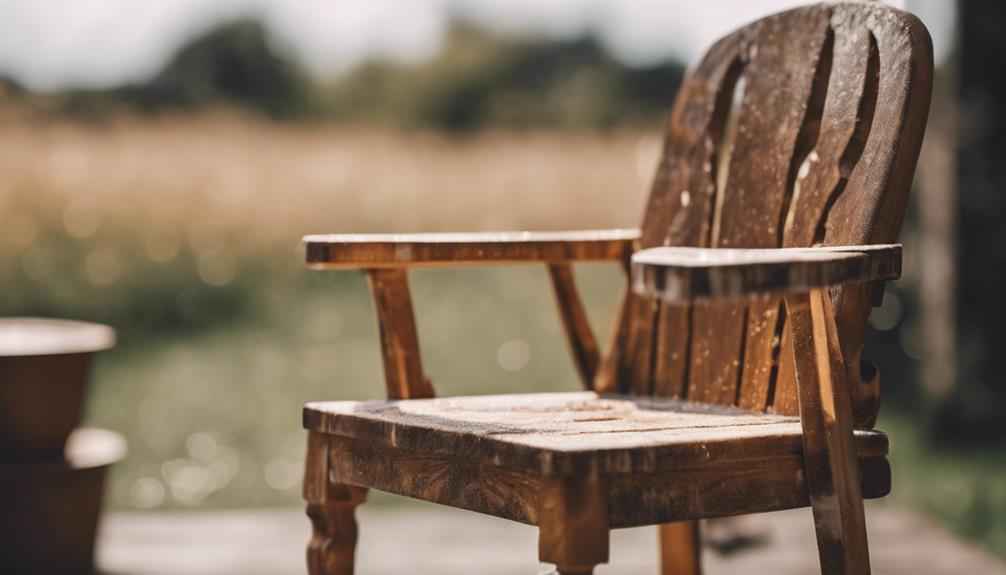
Proper drying time between coats of Frenchic Alfresco paint plays an important role in ensuring excellent results. Allowing each coat to dry completely is essential for achieving better adhesion and durability.
Following the recommended drying times is necessary to prevent paint from lifting or smudging during the application process. Adequate drying time also contributes to achieving a smoother and more professional finish on your painted surface.
Patience with drying time between coats is key to ensuring a flawless result that will last. Rushing this step can compromise the overall quality of the paint job, leading to potential issues such as poor adhesion, uneven coverage, or premature wear and tear.
Tips for Best Results
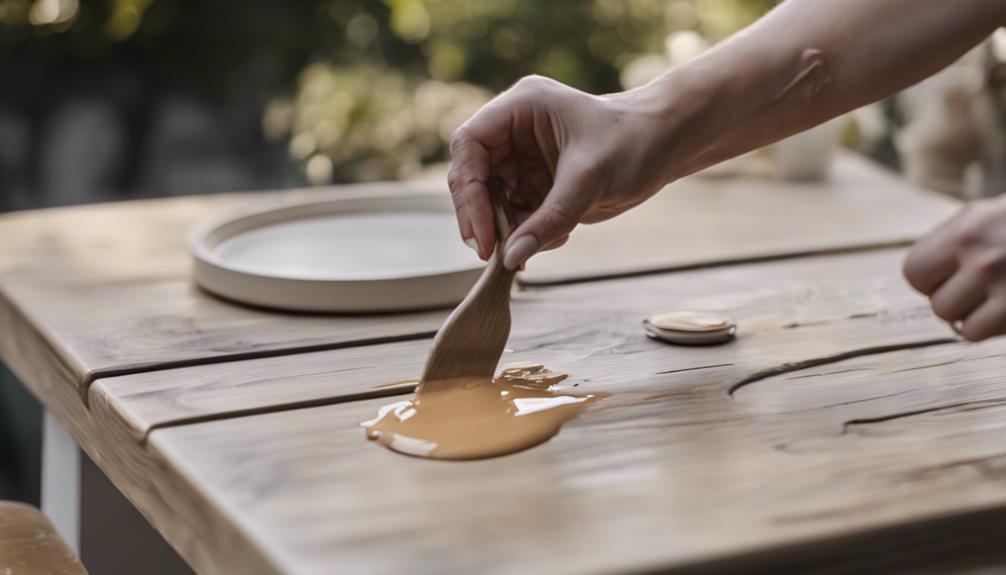
Maximize results by implementing these tips for achieving the best outcomes when applying Frenchic Alfresco paint:
- Apply Two Coats: To ensure top coverage and durability, it's recommended to apply at least two coats of Frenchic Alfresco paint. This will enhance the overall finish and longevity of the painted surface.
- Allow Proper Drying Time: Make sure each coat is allowed to dry thoroughly before applying the next one. Adequate drying time is essential for the paint to adhere correctly and prevent any issues with the finish.
- Enhance Color and Durability: The second coat plays a significant role in improving the color vibrancy and durability of the paint. It adds an extra layer of protection and richness to the final result.
- Consistent Painting Techniques: Maintain consistency in your painting techniques for each coat. This ensures a uniform finish across the entire surface and avoids any inconsistencies in the paint application process.
Common Mistakes to Avoid

What're some common mistakes to avoid when applying Frenchic Alfresco paint?
To achieve the best results, it's important to steer clear of certain errors.
Avoid applying the paint too thickly, as this can result in cracking or peeling of the finish.
It's vital to allow each coat to dry completely before proceeding with the next one to prevent any uneven coverage or adhesion issues.
Another mistake to avoid is using a small roller that may not distribute the paint evenly, leading to an inconsistent finish.
Additionally, make sure not to apply excess paint, as this can cause dripping, sagging, or prolonged drying times.
Remember to stir the paint thoroughly before each application to maintain a consistent color and finish throughout the project.
If additional coats are necessary for full coverage and the desired color intensity, apply them following the recommended drying times between each coat for the best results.
Frequently Asked Questions
How Many Coats of Frenchic Alfresco?
For the best results, you should apply two coats of Frenchic Alfresco. The first coat creates a base layer, while the second coat enhances color depth and coverage. Make sure each coat dries completely before adding another.
How Long Does It Take for Frenchic Alfresco to Cure?
Proper cure time for Frenchic Alfresco varies with temps and moisture. Allow 24 hours for the second coat before use. For longevity and beauty, adhere to suggested cure times.
How to Get the Best Finish With Frenchic Paint?
To achieve the best finish with Frenchic paint, apply two coats for full coverage. Make sure each coat dries fully before adding the next to avoid smudges. Use a brush or roller for even application, following the wood's grain.
Do I Need to Sand Before Using Frenchic Alfresco?
So, you're wondering about sanding before Frenchic Alfresco? Nope! Skip the sandpaper hassle. Clean up, grab that paint, and go for it. This self-priming, self-sealing gem sticks like glue. Easy peasy, right?
Conclusion
To sum up, applying two coats of Frenchic Alfresco paint provides numerous benefits, including enhanced color depth, professional finish, and increased durability. By following proper application techniques and allowing for adequate drying time, you can achieve the best results for your outdoor projects.
Remember, a little extra effort now can lead to long-lasting and impressive results in the future. So, don't cut corners – take the time to apply two coats for a finish that truly stands out like a shining beacon in the night.
